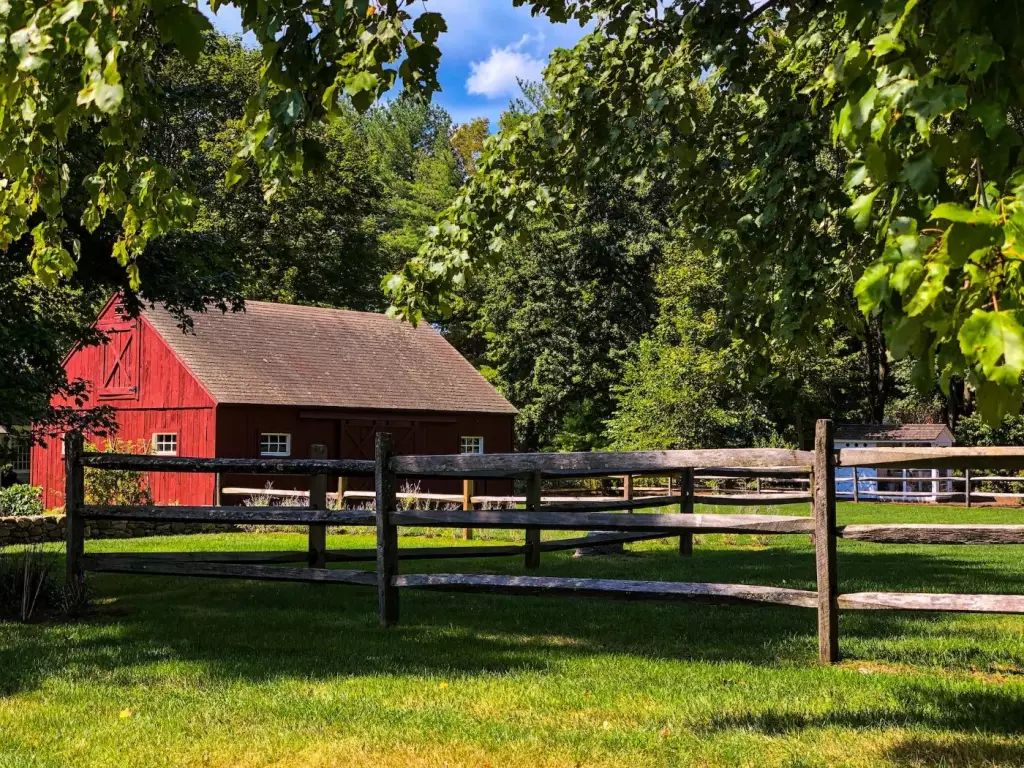Can You Live (or Build a House) On a Smallholding?
One of the few reasons why small farms fail is that farmers do not monitor their farms closely. To counteract this event, it’s best for farmers to build a house on-site to monitor their crops and livestock regularly and ensure smooth operations. The most common question, however, is: Can you live on or build a house on a smallholding? Let’s find out.
You can live and build a single-family house on a smallholding, given that zoning regulations, and factors like water access, and soil makeup have been checked, and the building has been permitted. A permit and approval from the local planning office are required before building a house on a smallholding.
Now that you know that it’s possible to build a house on a smallholding, can you now start with the construction? Not yet. There are plenty of things to consider as well as laws and regulations to follow when building a house on a smallholding, and we’ll look at all of those below.
Summary
- It is possible to build a house and live on a smallholding if factors like water access, soil makeup, zoning regulations, and other considerations have been checked.
- Building a house on a smallholding will need approval and a permit from the local planning department before proceeding.
- Living on a smallholding is a great challenge for anyone's lifestyle, but if done right, it will be worth it.

On this page:
You Can Build a House and Live on a Smallholding
One important reason why small farms fail is that farmers are not able to monitor their land closely. Spending quality time to check on your farm operations—whether your crops or your livestock—can help you know what things need to be improved to avoid your small farm from perishing.
For this reason, farmers usually decide to build single-family homes within their smallholding. But before they can do so, one has to be familiar with the farmland and things like soil makeup, water rights, zoning, and tax laws.
Check the water access and soil makeup before building a house on a smallholding
Purchasing a smallholding with a plan to build a home on it is different from how you purchase land in other residential areas. If you plan to farm on your smallholding, knowing about your water rights must be a top priority to consider.
It’s also important to know about the soil makeup of the farmland because soil health ensures the success of your crops. The soil supplies the essential nutrients, water, and oxygen, and supports the roots of the crops to enable them to grow and flourish.
Know about zoning regulations and what your property has been zoned for
Aside from soil and water, one must know about agricultural zoning. Agricultural zoning is the government’s way of limiting the density of development and restricting non-agricultural uses of land within the zone. It is done to protect farming activities and the farmland itself from non-farm uses.
Agricultural zoning doesn’t necessarily mean the sole use of agricultural land for farming purposes. It just sets limits so the land will not be abused. If you intend to buy agricultural land for building a house, you must be comfortable living next to farms that might raise livestock.
Another thing about zoning is that it’s not constant. Zoning laws and regulations are often subject to change. If you originally planned to raise chickens but ended up raising another type of animal for livestock, you might want to check what your property has been zoned for to avoid issues.

Identify if your smallholding is under a flood zone
While being in a flood-prone zone is not bad for farmland because the deposits after the flood can enhance the soil, it’s different if you plan to build a house on it. Purchasing farmland that is also in a flood zone may require you to file for flood insurance, which is pretty expensive.
Assess land to get property tax exemptions
Land that is used for agricultural purposes or farming can get significant tax savings. Requirements for exemptions vary per state, but some states base eligibility on the size of the property and some on the sales and production of the land.
Be careful, however, if you plan to just build a house on your smallholding and never use it for farming, because the state may require you to pay back the taxes that were exempted in previous years.
Steps in Building House on a Smallholding
There’s a difference between building a house to support your farm and building houses to sell or rent for residential use, on the agricultural land you purchased. The former is more likely to get approval, especially if you can prove that the building or house is for farming purposes, such as if you want to monitor your farmland closely and regularly.
Building a house on agricultural land is no different than building a house elsewhere, but a few considerations may have to be weighed in.
Below are five main steps to build a house on an agriculturally zoned land like a smallholding:
- Check with your local planning department to see what your property has been zoned for and if you will be required to change it to be able to build a house on your property. If a change is required, make sure you assess if you can handle the additional fees involved.
- Check for water resources. Since agricultural lands are far from the city or town, water supply is often scarce. A well can be a good answer for this problem, but if groundwater becomes scarce too, you may want to have a backup plan. On homesteads, homesteaders usually install a rainwater tank collector.
- Check the distance between the road and the location of your house. This will enable you to check accessibility for phone lines, power lines, and driveways.
- Obtain a building permit process from your planning department or building inspector to start off with tests such as runoff control, erosion control measures, and soil tests, which are all required when building a house on agricultural land.
- Install utilities, a driveway, and other things that your contractor will need to access your location and proceed with the house construction process.
The Reality of Living on a Smallholding
Almost half of the population in the United Kingdom dreamed of living a good farm life in a smallholding. People want to become smallholders for the following reasons: to live sustainably, maintain a healthy lifestyle, have a good retirement plan, and have the chance to live on the outskirts of the country.

But the reality of living in a smallholding can be quite a lifestyle change, especially if you are a beginner. But once all your needs are met, things will work out fine for you. However, during the start, you must be prepared for a lot of hard work, such as digging, building, fencing, running around, and carrying out general maintenance tasks.
Keeping livestock will require more effort than growing vegetables and crops. Livestock animals must be checked and fed daily. Their food needs to be sourced, delivered, stored, and moved to feeders. During unfavorable weather conditions, this will be more challenging, so investing in a well-functioning tractor may help.
Smallholders also struggle with finances since some farming equipment is expensive. Animals are also prone to diseases and must be checked by a veterinarian every now and then. Some seasons are also not favorable for producing crops.
With all of these, living on a smallholding can be a real struggle, but if done right, you can live sustainably and enjoy the dream farm life.

